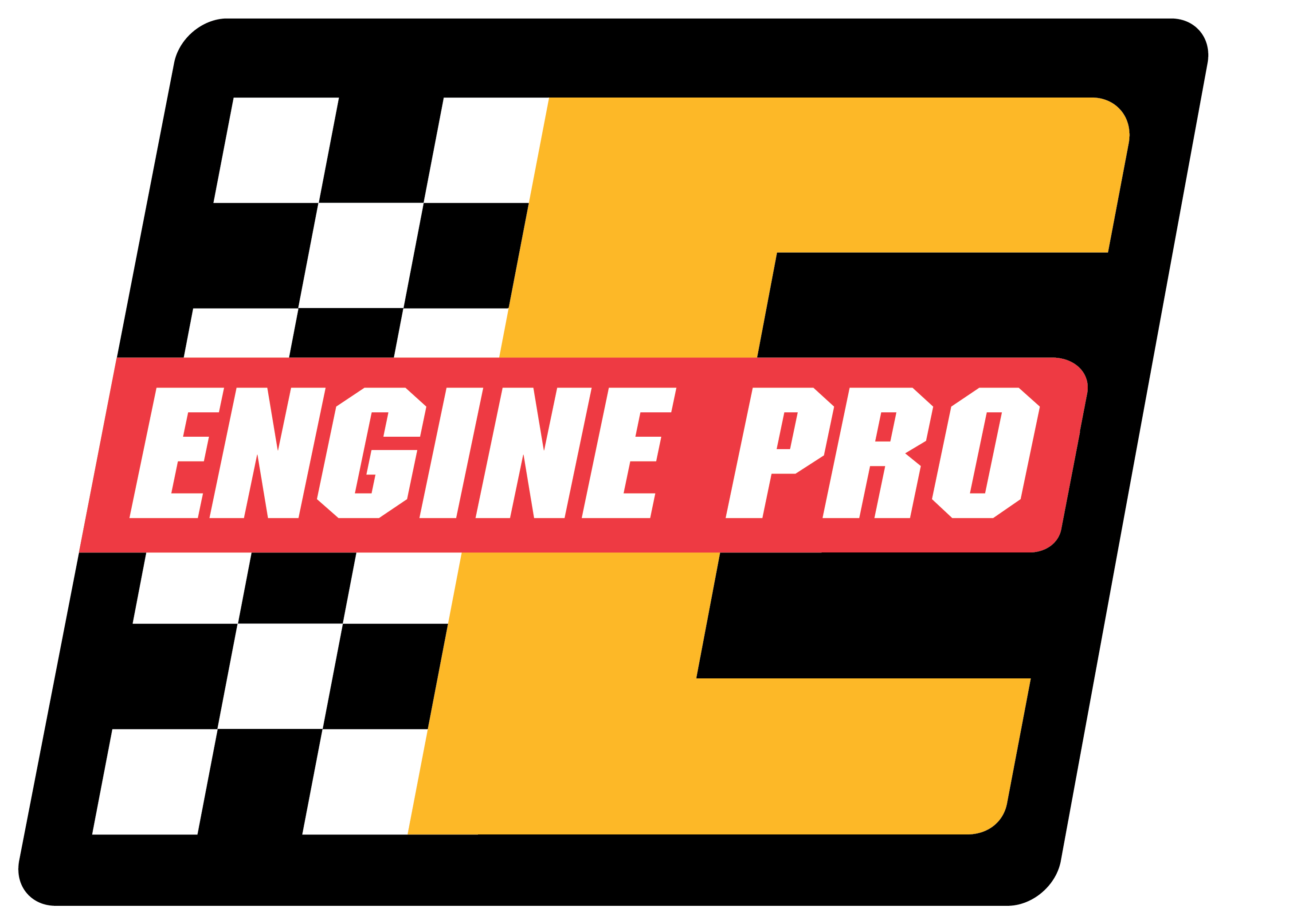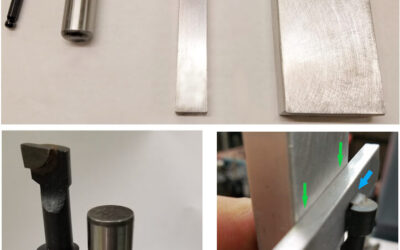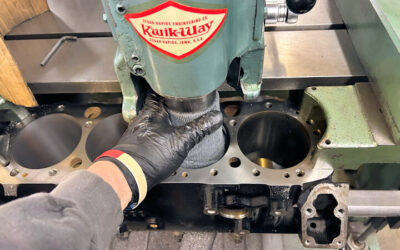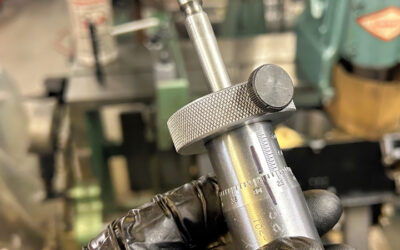CYLINDER LINER CAVITATION EROSION
Cavitation erosion is often found in diesel engines on the exterior walls of wet cylinder liners. The amount of erosion and decay will vary from engine to engine and may also vary from cylinder to cylinder. Vertical strips or patches of decay often form outside the cylinder corresponding with the piston thrust face. They also form just over the top sealing ring of the liner. If not kept in check, coolant may eventually penetrate the cylinder and contaminate the oil or oil may be introduced to the coolant. It has been proposed from a group of engine rebuilders and parts manufacturers that this cavitation erosion is caused by excessive harmonic vibrations in the engine and possibly by or in conjunction with loose fitting cylinder liners. Both cause the formation and implosion of vapor bubbles within the coolant which attack and erode the cylinder liner surface. Vibration is caused as the pistons move up and down within the cylinders, especially at the piston thrust area. The surface of the cylinder sleeve that comes in contact with the coolant is moving in and out very quickly. During this process small bubbles are produced and struck. The resulting implosion causes shock waves against this surface that have been calculated to reach over 10,000o F and pressures over 10,000 psi. Cost effective materials to manufacture parts from that would prevent this cavitation erosion have not yet been found. Some coatings have been applied to slow the decay and extend engine life before majors repairs are needed. A reduction in harmonic vibrations will also eliminate cavitation. Correct fitting liners cannot be over stressed. Incorrect clearance between liner and cylinder block can be a serious contributor to liner vibration. In many cases cavitation can be avoided by making sure the fuel injection complies with the manufacturer’s specifications, the engine’s speed is governed according to the manufacturer’s data and that these controls function. Supplementary Cooling Additives (SCA) are specified by manufacturers and these additives form a protective coating on surfaces exposed to the coolant in an effort to reduce cavitation erosion. Following proper maintenance schedules will help keep the proper level of concentrations of these SCA’s aiding cavitation protection, to maintain proper pH to avoid corrosion and to check water hardness to avoid mineral deposit formation. All manufacturer’s recommendations regarding additives, coolants and coolant filters as well as maintenance schedules should be strictly adhered to and followed at all times.
ENGINE PRO TECHNICAL COMMITTEE
with thanks to HOWARD ENTERPRISES
April, 2014





